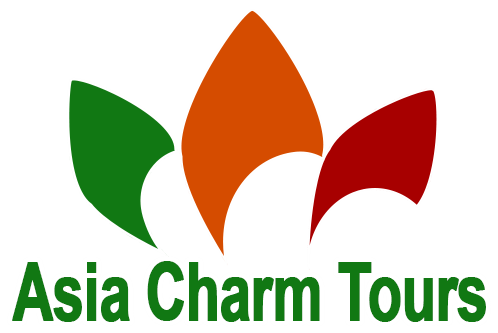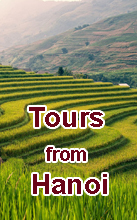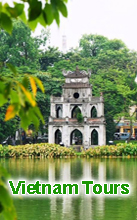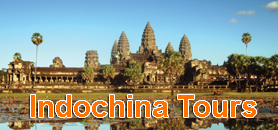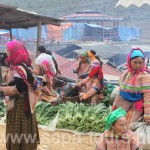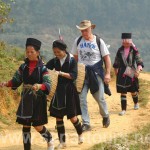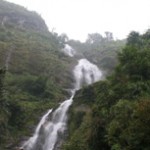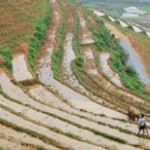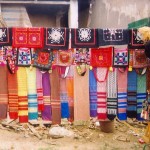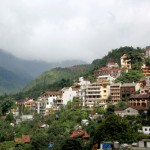Cluster of Bac Ha Relics
Located around 70km northeast of Lao Cai City, the mountainous district of Bac Ha boasts a high potential for tourism. Starting from Lao Cai City, visitors will travel on high-way 70 for about 39km, taking a left turn to continue the trip for another 24km on provincial road 153 before reaching Bac Ha Town.
Having a mild temperature, Bac Ha reveals its most stunning beauty in the spring when peach and plum trees are in full blossom all over the place. Tam Hoa plum are grown everywhere in the locality. However, the most beautiful plum gardens are found in Ban Pho Commune at the foot of Co Tien Mountain, about 4km from Bac Ha Town. In the drizzling rain, purely white flowers of Tam Hoa plum trees in full blossom are gone with the mild spring wind like white butterflies flying away. That’s why Bac Ha is also called “Cao nguyen trang’’ (literally interpreted as White Valley). Possessing a variety of natural sightseeing places of breathtaking beauty, Bac Ha also has an appeal of a rich culture of 14 ethnic minority groups inhabited in the area.
Bac Ha weekly market is one of the biggest weekly markets in northwest Vietnam. The market is held every Sunday morning, gathering all the locals for bartering and stocking up on goods. It’s not only a market, but a chance for them to meet, talk, and gossip. Every Sunday morning, the market is packed with H’mong, red Dao and Ha Nhi ethnic minorities. Visitors can find a surprising feel of hand-made embroidered items, tasting “Thang co” (mixture of all parts of horses) and corn wine, which are famous food and drink of the ethnic minority people in the area. In the edition early 2009, Sri Lanka’s Serendis magazine introduced Bac Ha market as one of the ten attractive weekly markets in Southeast Asia.
Hoang A Tuong Castle, 300m from Bac Ha Market, is located in the heart of Bac Ha Town. It is a unique structure depicting com-bination of Western architecture and Oriental Feng Shui principles. The owner of this two- storey building is Hoang Yen Chao of Tay ori-gin whose son is Hoang A Tuong. Hoang Yen Chao was a powerful local mandarin who safeguarded by the French colonialists. The Hoang A Tuong Castle covering an area of 4,000m2 was built between 1914 and 1921 on a low hill overlooking the Bac Ha Valley. The two-storey building has a total floor space of 400m2, entailing living rooms, bedrooms, meeting rooms, and an accommodation area reserved for maids and guards. On the place is a defence system with fortified walls and bunkers serving as watchtowers to spot movements hailing from all directions to the building. A relic of the French colonialism, the Hoang A Tuong Castle remains quite intact. Bac Ha Temple is also located in Bac Ha Town. The temple is dedicated to Gia Quoc Cong Vu Van Mat – who brought fame to Bac Ha land and the nation’s northwestern border under the Mac and Late Le dynasties. On the seventh day of the seventh lunar month, a festival is held at Bac Ha Temple for the locals and people from far and near to pay tribute to Gia Quoc Cong, who made great services to the nation and the people.
Also see:
- Sin Chai village
- Tram Ton Pass
- Ta Van Village – A pure gem of Sapa
- The Nung and Tu Si house with tranditional baked clay roof tiles
- Beauty of mist in Ham Rong Mount
- Church singing in early spring in Ta Phin
- Sour noodle soup – Upland unique cuisine in Sapa
- Story about unique horse-drawn carriage in Bac Ha
- Bird Market in Muong Khuong village
- Plum flowers blossom in Bac Ha during February.
- Sapa Pau Play Day Cake
- Salmon in Sapa


